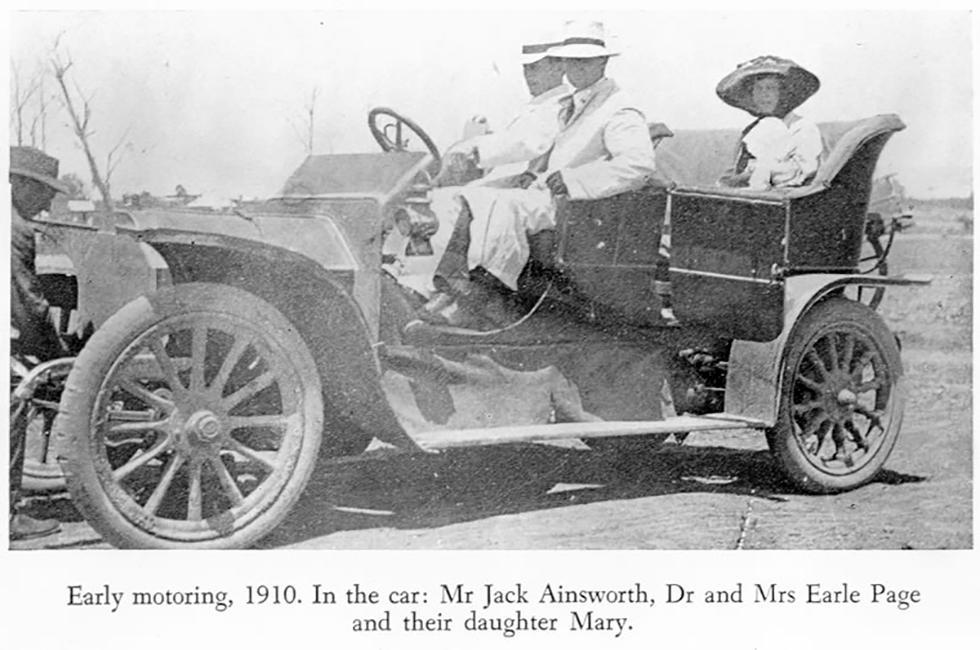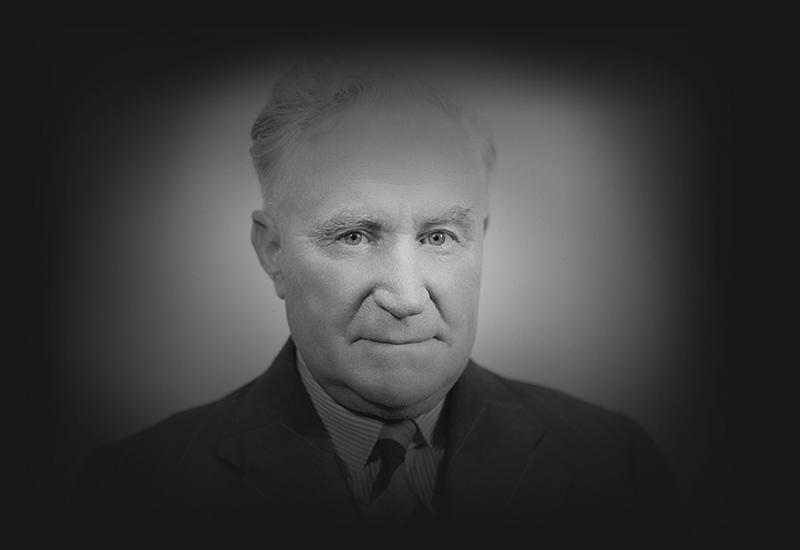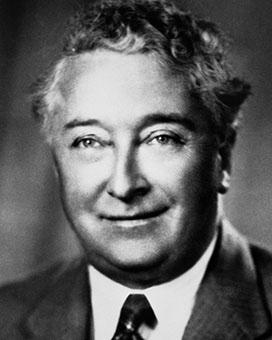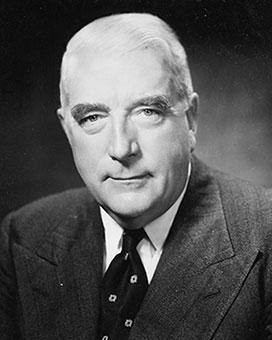Ethel Page worked with Earle Christmas Grafton Page to found the Country Party, and was on the party executive for over 7 years. She was also an executive member of a wide range of organisations including the Australian Red Cross Society, the YWCA (Young Women’s Christian Association) and the National Council of Women. She travelled throughout Australia and overseas, developing Country Party networks and building the foundation of a wide range of women’s political and welfare organisations.

Ethel Page and baby Mary in the family's car in Grafton, New South Wales in 1910. National Library of Australia, Truant Surgeon, Angus & Robertson, Sydney, 1963, p. 48.
Ethel Blunt was born in 1875 and married Earle Page in 1906. A trained nursing sister, she had met the young surgeon in his first year of medical practice. Like him, she had topped her final year of study. She had been a theatre sister and hospital matron in Sydney before moving to Grafton in northern New South Wales in 1904, to take charge of the hospital Page established there.
Both the Pages were active in the local community and became influential local figures. After Page won a seat in federal parliament, the family moved to Sydney with their 4 children in 1920. There Mrs Page developed wider political networks, particularly within the energetic and effective women’s organisations.
Mrs Page joined the Feminist Club, the Lyceum Club, and the New South Wales National Council of Women. She was a founder of the Women’s Country Party, and very active in the Country Women’s Association and the Australian Red Cross Society. Although only briefly a prime ministerial spouse, she was required to take this role also during Page’s extended periods as acting Prime Minister for Stanley Bruce in the 1920s and Joseph Lyons in the 1930s.
Mrs Page suffered a slight stroke after the Pages’ eldest son was killed in 1933. Despite the resulting physical impairment, she maintained her very active public life and fulfilled the duties of the role of ‘political wife’.
Unlike Mary Hughes, Mrs Page did not live in Canberra during parliamentary sittings. Her focus was on her own political and community activities. From 1951, when the Pages sold their Queensland and Sydney properties, they divided their time between the Clarence River property ‘Boolneringbar’ and an apartment in Elizabeth Bay in Sydney.
Ethel Page died on 26 May 1958.





